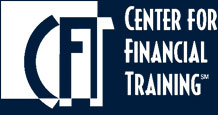The CFPB has (finally) issued its long-awaited Final Rule on Small Business Lending Data Collection, which will require lenders to collect and submit to the CFPB data around small business loan applications by June 1st of each year. Fortunately, there is a transitioned implementation period, and when lenders must comply is based on how many small business loans they originate. That is but one of several important changes from the proposed rule. This rule will have a dramatic impact on small business lenders’ operations, and not just from an operational standpoint. There are significant cultural issues to address as well, as this will change in significant ways small business applications are collected and processed.
In this webinar, we’ll do a deep dive into the requirements of the rule, including when, and whether, the institution must begin to collect and submit data. One of the many keys to determining the requirements is to understand the definitions involved, from “covered financial institution,” “covered origination,” and “covered credit transaction,” among others. We’ll discuss precisely what a small business is, so you can zero in on which areas of the institution are affected by the requirements. We’ll also examine the many data requirements – what they mean, how they’re defined, how to collect them, and ultimately submit them. This rule will have exact a heavy load on the technology and automation functions of the institution, and we’ll discuss some best practices in this area.
We’ll also talk about what this data means from a fair lending standpoint, including the public nature of the information and some suggestions for fair lending analytics, as well as policy and procedure impacts. Join us for this in-depth discussion of the rule so you can best prepare for implementation, both operationally and technologically, and also culturally.
What You’ll Learn
- The Final Rule itself – where to find helpful resources for compliance
- Differences between the proposal and Final Rule
- Who is covered? Examining the coverage thresholds and timing requirements, including the “transitional provision”
- Interplay between this rule, HMDA, and CRA reporting requirements
- Who is a “covered financial institution”?
- Determining what to report – covered credit transactions and covered originations
- What types of applications are reported? How is an application defined for this purpose?
- Deep dive into the data points – both those generated by the lender as well as those provided by the applicant
- Collecting demographic information – forms, verifications, policies, procedures, and (fortunately) no responsibility to guess
- Submission requirements – technology implications
- The “firewall” requirement – ensuring lenders to not have improper access to the data
- Safe harbor and “bona fide errors” provisions
- The CFPB’s Policy Guidance on supervisory and enforcement activities
Who Should Attend
Anyone in the institution who is involved in small business lending, particularly the application part of the process needs this course. This could include commercial lenders, processors, front-line staff, commercial lending support staff, and related employees, as well as compliance professionals, auditors, risk managers and officers, and line of business managers. Also, executive management and even Directors would benefit from understanding the requirements of this extensive new rule.
Continuing Education (CE) Credits
